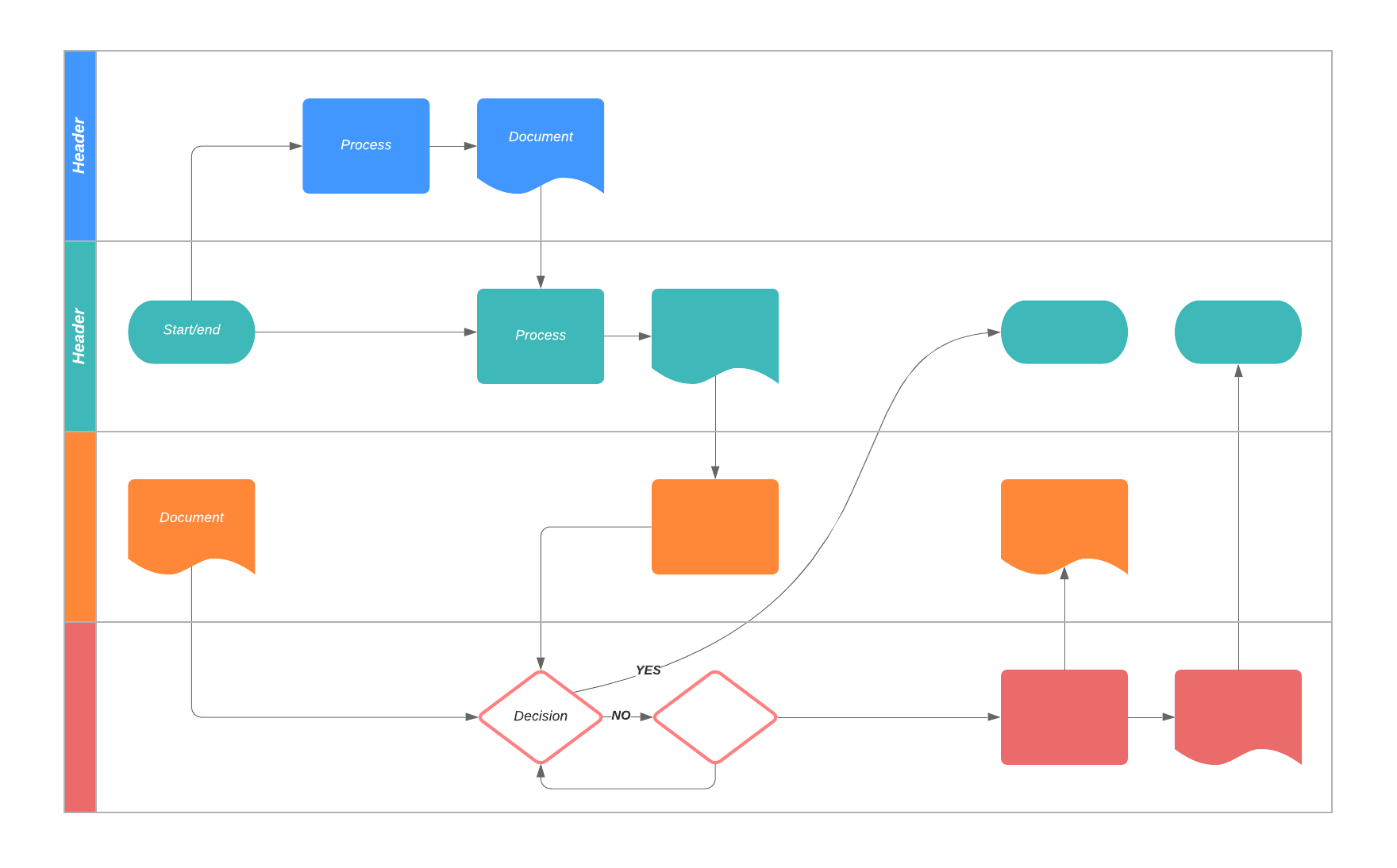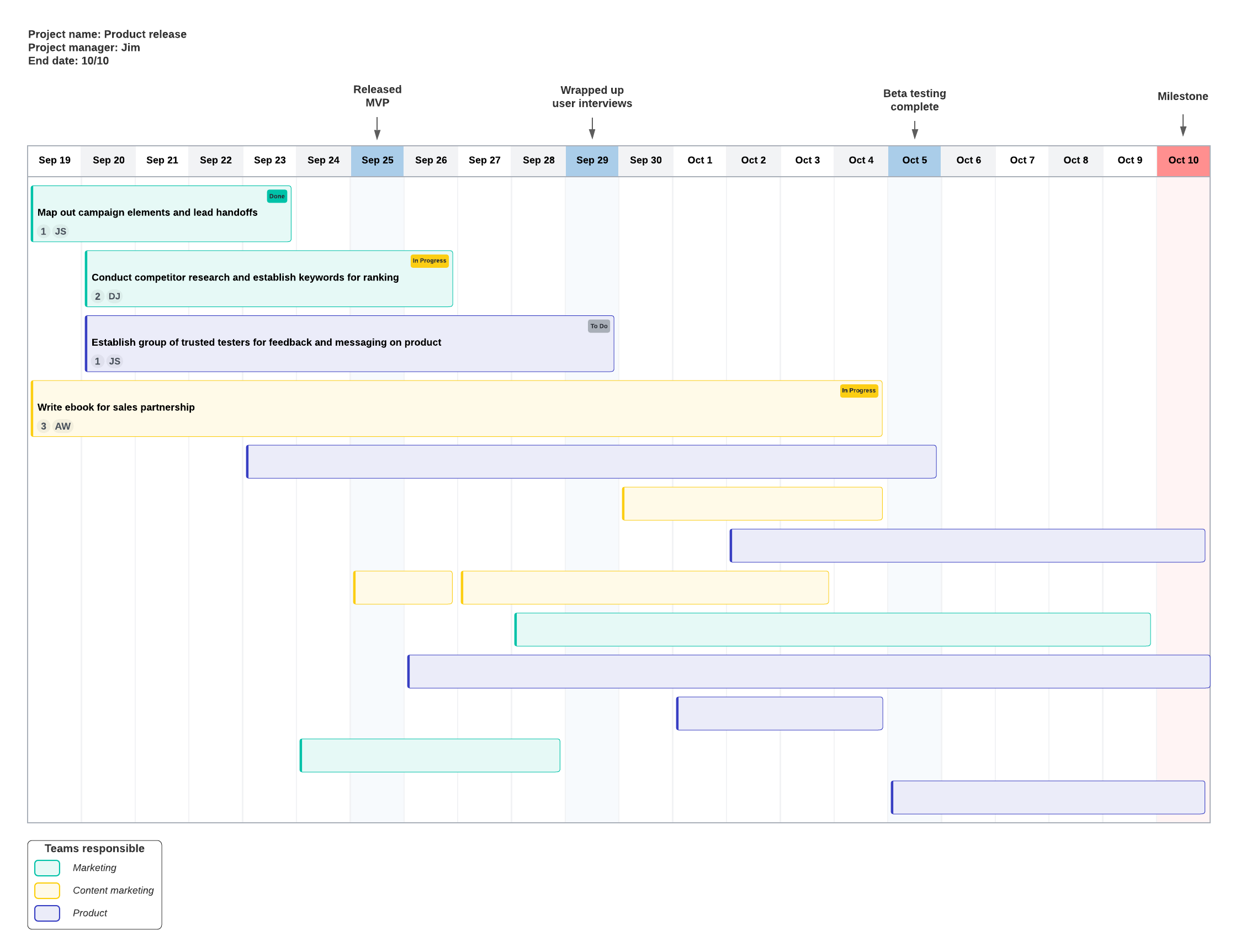You know the old saying about teamwork: two heads are better than one. But when tackling a project at the workplace, it can be hard to get two people—or three or thirteen—to agree to work together. Good teamwork hinges on a leader's ability to help their team feel inspired, cohesive, and clear about a project they're working on and for each employee to see why and how their contributions matter.
It might sound like a hassle to switch from the top-down, solitary, or siloed way that work is often done in companies. But the benefits are more than worth it—for the company, the individual, and the bottom line.
Why team buy-in matters
Sure, collaborating on team-based projects sounds warm and fuzzy, but it also benefits the organization, the company, and the individual employees in tangible, measurable ways.
Gives everyone more ownership
Gone are the workplace of old, where a select few managers made all the decisions, and individual employees contributed their small bit to the bigger vision in departmental or project silos. The new workplace is collaborative, communicative, and cross-departmental, allowing employees to contribute to more phases of a project—from strategizing to brainstorming to implementation. This new model allows employees to see the big picture behind their work and appreciate how their individual work contributes to that whole. This in turn inspires employees to be more productive, take bigger risks, and feel more engaged, increasing their loyalty to the company.
Balances strengths and weaknesses
Every workplace has employees who shine in some areas and struggle in others. One employee might excel at organization and strategy but struggle to come up with creative ideas. Another might brainstorm like a pro but feel lost when it comes to implementation. Team buy-in allows managers to match employee strengths and weaknesses in a complementary way, which takes all the responsibility off of one individual and allows teams to pick up each other's slack and build a sum greater than its parts.
Promotes creativity and risk-taking
Even the most innovative, creative employees run out of steam or ideas at some point, and many are reluctant to pitch a risky idea for fear that they will bear the brunt of failure alone. But when teams are set free to make decisions, one person's ideas can spark and inform another's, allowing more creativity and better ideas to emerge.
Team members can also use their different strengths to challenge each other respectfully and point out weaknesses or problems with ideas that might not be clear to one person—or even one department—alone. Similarly, working as a team allows the group to share the burden of risk, allowing more innovative ideas to emerge and helping individual employees to feel inspired and appreciated. But it also benefits the business more broadly, allowing the best, most cutting-edge ideas to rise to the surface.
Team buy-in is important for individual and organizational morale and performance. And it's supported by employers: 75% of whom rated teamwork as very important in a recent study. Additionally, 37% of employees said that working with a great team is their main reason for staying at a company. But there's a gap between these priorities and company performance—and competence. 39% of employees say that their workplaces don't collaborate enough, and ⅘ of leaders said they did not feel prepared to get team buy-in on their projects.
How to get buy-in from your team
So how do you bridge the gap between teamwork as an idea and teamwork in real life? Here are ways to build team buy-in and reap the benefits of collaboration.
Share your vision for a project
Often, managers will strategize, prioritize, and deliver a project to their team entirely on their own, and then expect their employees to execute it entirely on their own. But this is a surefire way to guarantee that employees are uninspired, unmotivated, and underutilized.
Next time you share a project, ask your team for feedback. Encourage employees to share ideas, constructive critiques, and questions about the project, from big-picture to implementation. Having more brains in the room will help you see the strengths and weaknesses of your proposal in ways that you couldn't see alone. It will also allow employees to help craft the project from start to finish, which gives them more ownership over the project and motivation to engage. Be prepared to compromise to ensure that the project meets the big-picture goals and motivates the people working on it. You can even get feedback and buy-in from key people before the meeting, ensuring that your proposal is as good as it can be before you start and has cheerleaders in the room from the beginning.
Finally, help your team see why the project is essential, not just how to execute it. A why statement clearly envisions the difference you want to make with the project and the actions necessary to achieve that goal. It offers people the motivation to commit to the project for the long haul and shows people how their individual strengths will help make it happen. To drill down to the why, you can brainstorm where the company is at the moment, where it would like to be in the near and long-term future, and how this project can help move toward that goal.
Emphasize the value of teamwork
Many employees might be excited about the project but reluctant to shift from the familiar territory of solo work to the complexities of working on a team. Invite and acknowledge your team members' concerns about this while highlighting how teamwork actually makes projects easier. Inspire them by reminding them that organizations that work collaboratively are often more efficient, more effective, and more motivated to do the work. Let them know that teamwork will help distribute the workload to do more of what they love and less of what they don't while letting others' strengths and interests complement their own.
Find what your team members value and speak to those priorities. Do they care most about saving time? Reducing costs? Enjoying each others' company? Speak to the ways that teamwork can help them meet those priorities.
Don't be afraid to get creative. Show your team that teamwork can be enjoyable by doing an activity together or brainstorming a new project from a beautiful location. Showcase case studies where other companies used teamwork to help improve their products and outcomes.
Give team members ownership
You can have a brilliant vision and a shared objective, but even the best-laid team plans will fall apart without team ownership of the actual process. When forming a team, take time with each individual to explain why you chose them for the team and what strengths you see them bringing to the project. Talk with them about their fears, reservations, or weaknesses that they see getting in the way of their performance, and help them get the training, assistance, or inspiration they need to do their best—ideally from another team member. Explain how the strengths of people on the team will help the whole group achieve its goals.
Finally, assign different parts of the project to other team members to own, setting goals around these particular individual focus areas and showing the team how these objectives will cohere into a whole.
Be transparent with project timelines and objectives
Once you have a clear idea of your goal, be as transparent and communicative as possible about how you will achieve it. Create project timelines that build toward individual objectives and ramp up toward the end goal. Help team members visualize these processes with software like Lucidchart and Lucidspark, which allow them to see the whole plan from start to finish and how their objectives and projects feed into the overall timeline and goals. This will enable employees to pace themselves, see how their current work builds toward a whole, and understand when and how your team will achieve project goals.


Recognize contributions made by team members
It takes more than a shared goal and clear roles to inspire team buy-in. Team members don't just want to be part of something bigger—they want to be recognized for their contributions. In fact, 40% of Americans say they'd put more energy into their work if they were recognized more often, but 82% say that their supervisors don't appreciate them enough for their contributions. This lack of recognition can create burn-out, resentment, and low-quality work—all damaging to the spirit of working together as a team.
It's crucial to incorporate employee recognition into the project vision. Acknowledging and appreciating employees shouldn't be a one-off or ad hoc affair. Build ways to recognize growth, strengths, and contributions into the project timeline, allowing regular meetings, moments, and feedback sessions where team leaders can express appreciation for team members' contributions—from a simple "good work" to a handwritten note or a mid-project party.

Want more information on building team ownership?
Read moreAbout Lucidchart
Lucidchart, a cloud-based intelligent diagramming application, is a core component of Lucid Software's Visual Collaboration Suite. This intuitive, cloud-based solution empowers teams to collaborate in real-time to build flowcharts, mockups, UML diagrams, customer journey maps, and more. Lucidchart propels teams forward to build the future faster. Lucid is proud to serve top businesses around the world, including customers such as Google, GE, and NBC Universal, and 99% of the Fortune 500. Lucid partners with industry leaders, including Google, Atlassian, and Microsoft. Since its founding, Lucid has received numerous awards for its products, business, and workplace culture. For more information, visit lucidchart.com.

